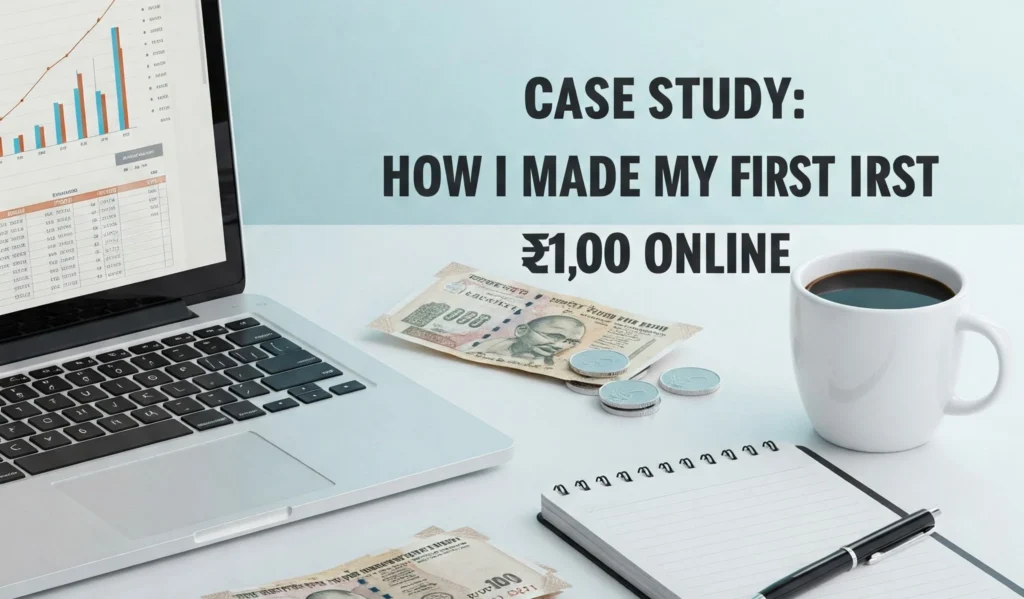Case Study: How I Made My First ₹1000 Online

Table of Contents
Introduction :My First ₹1000 Online
Earning money online has become a viable option for many, offering flexibility and the potential for financial independence. In this case study, I share my personal journey of making my first ₹1,000 online, detailing the methods I used, the challenges I faced, and the lessons I learned. My First ₹1000 Online
Understanding the Online Earning Landscape
Before diving into the methods, it’s essential to understand the various avenues available for making money online: My First ₹1000 OnlineMy First ₹1000 OnlineMy First ₹1000 OnlineMy First ₹1000 Online
- Freelancing: Offering services like writing, graphic design, or programming on platforms such as Upwork or Fiverr.
- Affiliate Marketing: Promoting products and earning a commission for each sale made through your referral link.
- Selling Digital Products: Creating and selling eBooks, courses, or templates.
- Online Tutoring: Teaching subjects or skills via platforms like Chegg or Tutor.com.
- Content Creation: Earning through YouTube, blogging, or podcasting via ads and sponsorships.
Step 1: Identifying My Skills
I began by assessing my skills and interests. With a background in content writing and a passion for teaching, I decided to explore freelancing and online tutoring.
Step 2: Setting Up Profiles on Freelancing Platforms
I created profiles on Upwork and Fiverr, highlighting my writing experience and offering tutoring services. I also joined online tutoring platforms to reach students seeking help in English and writing.
Step 3: Crafting Compelling Proposals
When applying for jobs, I tailored each proposal to the client’s needs, showcasing my expertise and how I could add value to their project. Personalization and professionalism were key.
Step 4: Delivering Quality Work
Upon securing my first few clients, I ensured timely delivery and high-quality work. Positive feedback and ratings helped build my credibility on these platforms.
Step 5: Exploring Affiliate Marketing
Simultaneously, I started a blog focusing on writing tips and educational resources. I joined affiliate programs related to writing tools and educational platforms, integrating affiliate links into my blog posts.
Step 6: Creating and Selling Digital Products
Recognizing common challenges among my tutoring students, I developed an eBook on effective writing techniques. I promoted this eBook through my blog and social media channels, generating additional income.
Challenges Faced
- Competition: Standing out among numerous freelancers required a unique value proposition.
- Time Management: Balancing freelancing, tutoring, and content creation demanded effective time management.
- Marketing: Promoting my services and products was crucial for visibility and sales.
Lessons Learned
- Consistency: Regularly updating my blog and profiles kept my audience engaged.
- Networking: Connecting with other freelancers and bloggers opened up collaboration opportunities.
- Continuous Learning: Staying updated with industry trends helped me refine my strategies.
Conclusion
Making my first ₹1,000 online was a culmination of leveraging my skills, delivering quality work, and diversifying income streams through freelancing, affiliate marketing, and digital products. This journey underscores the importance of persistence, adaptability, and continuous learning in the digital earning landscape.
Note: This case study is a fictional representation for illustrative purposes.

1 thought on “Case Study: How I Made My First ₹1000 Online”